Abstract
An extremely simple membrane transport model simulates qualitatively the observed flux-potential curves for steady-state potassium ion transport across a nerve (squid) membrane in the special case of high external potassium ion concentration. The transporting units (protein molecules) in the model are assumed to exist in two different conformations, which interact cooperatively. The membrane potential induces a transition between the two conformations by virtue, primarily, of a polarizability difference in the two conformations. Differential proton binding may make an important contribution to this effect.
Full text
PDF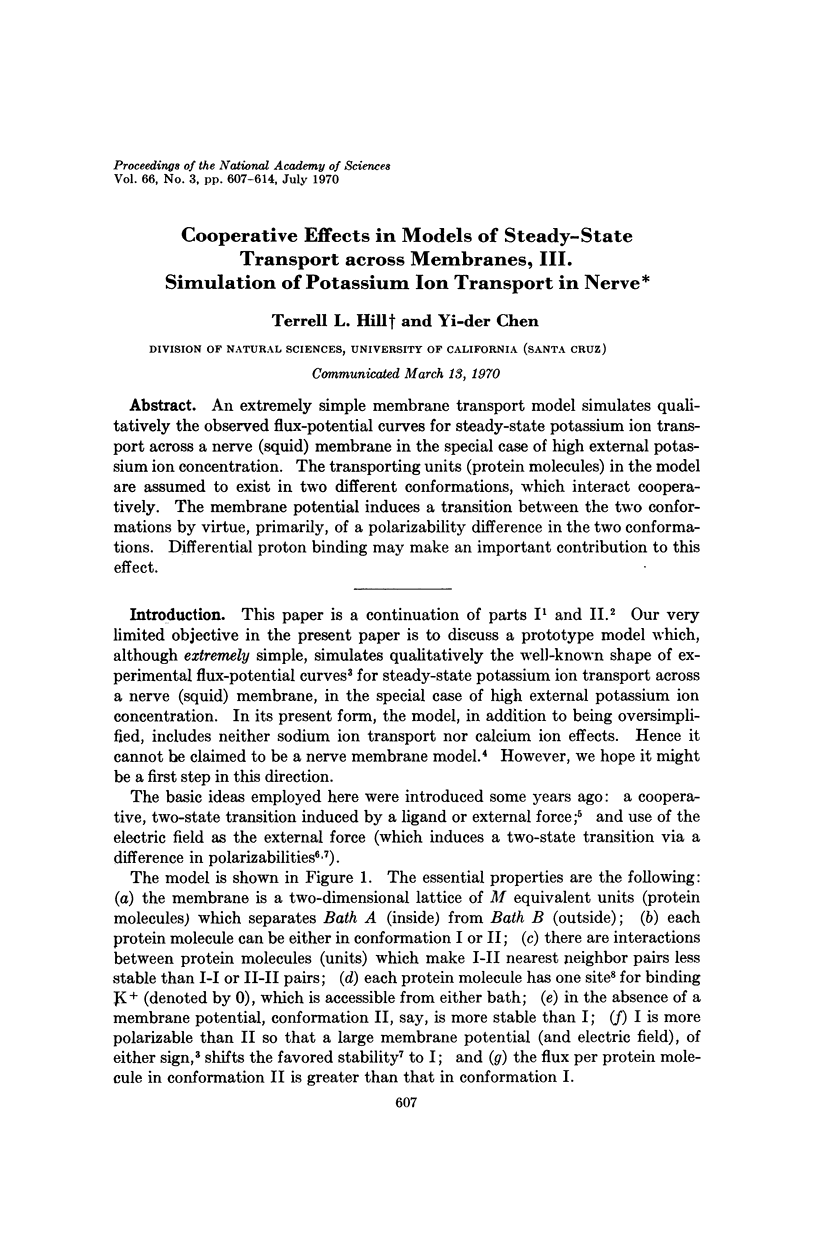
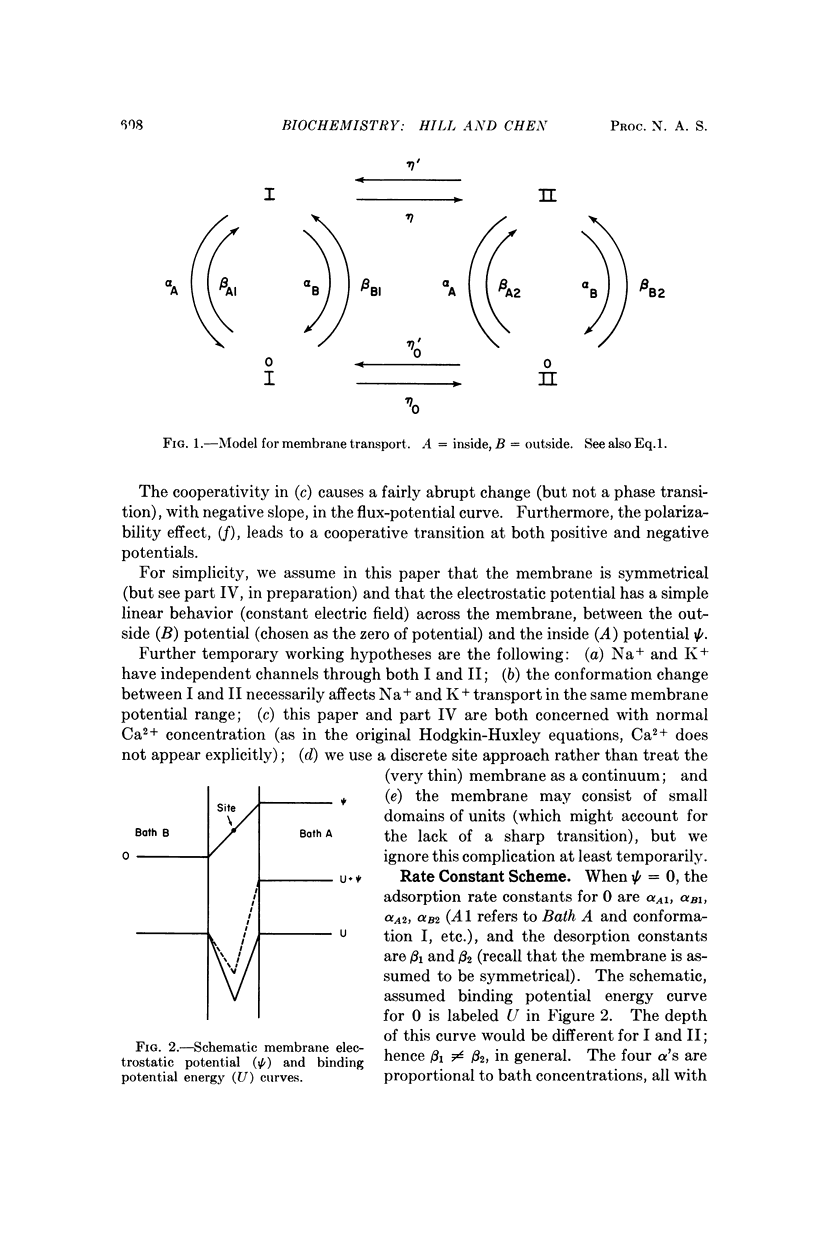
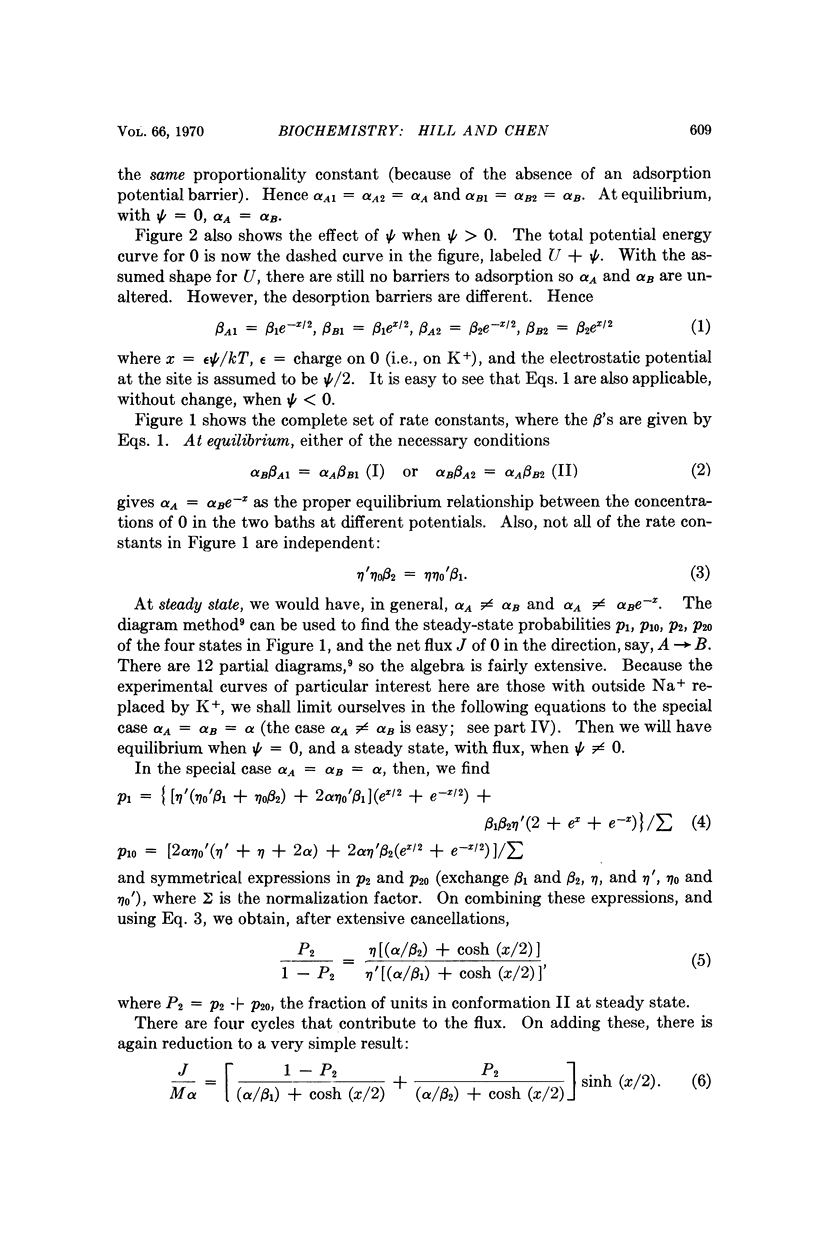
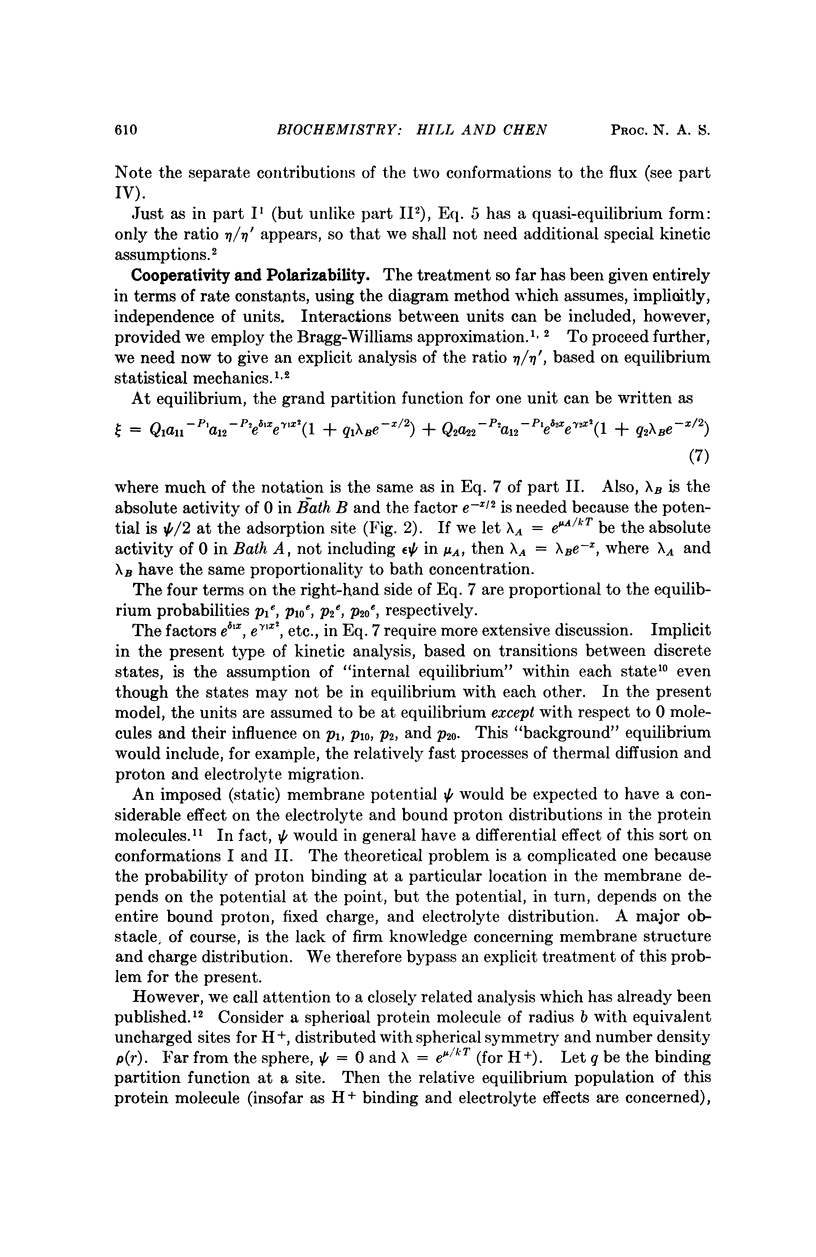
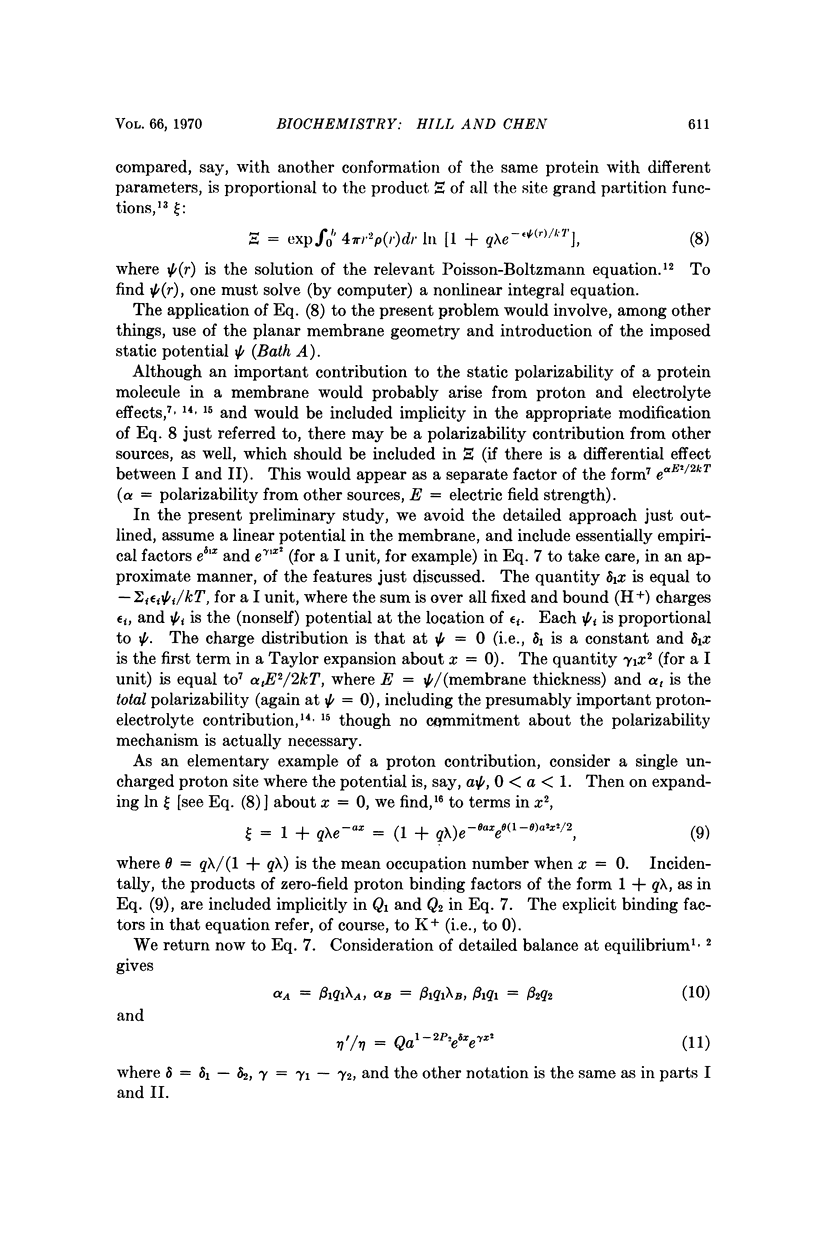
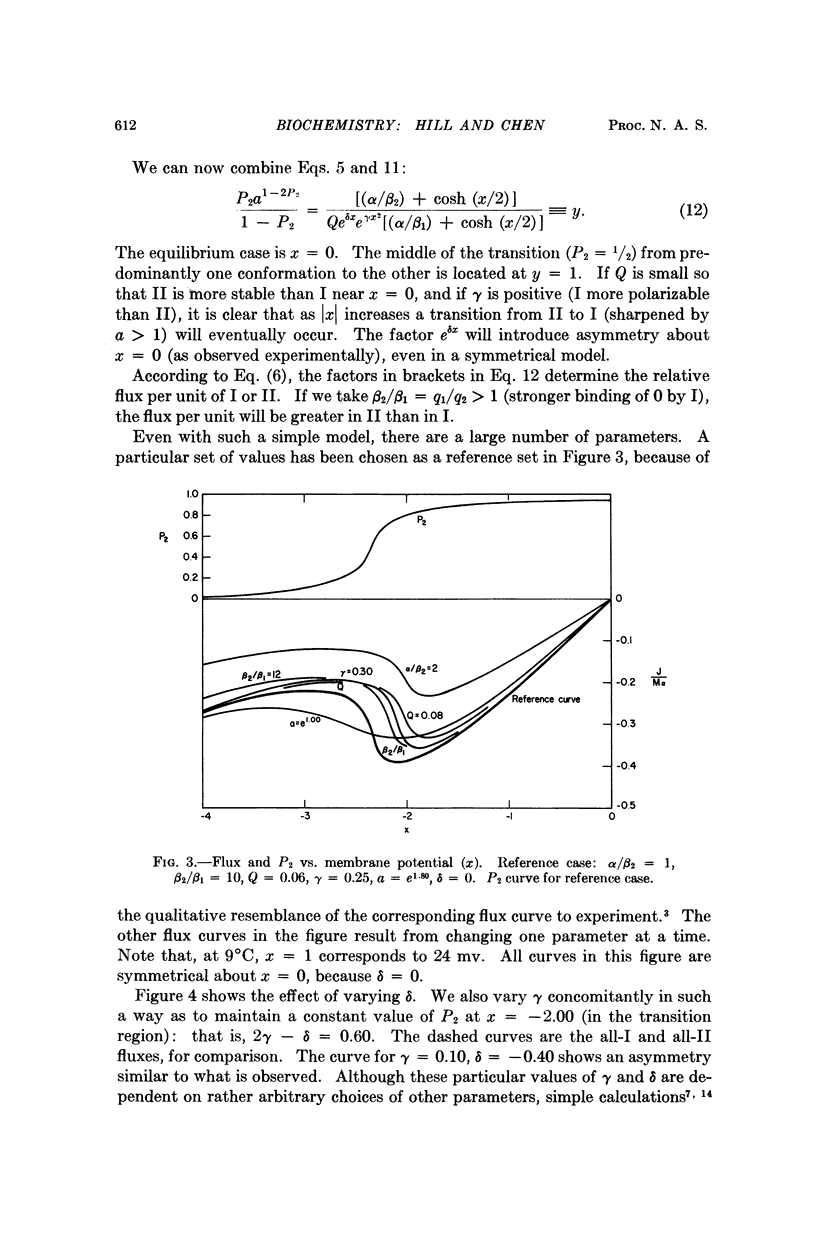
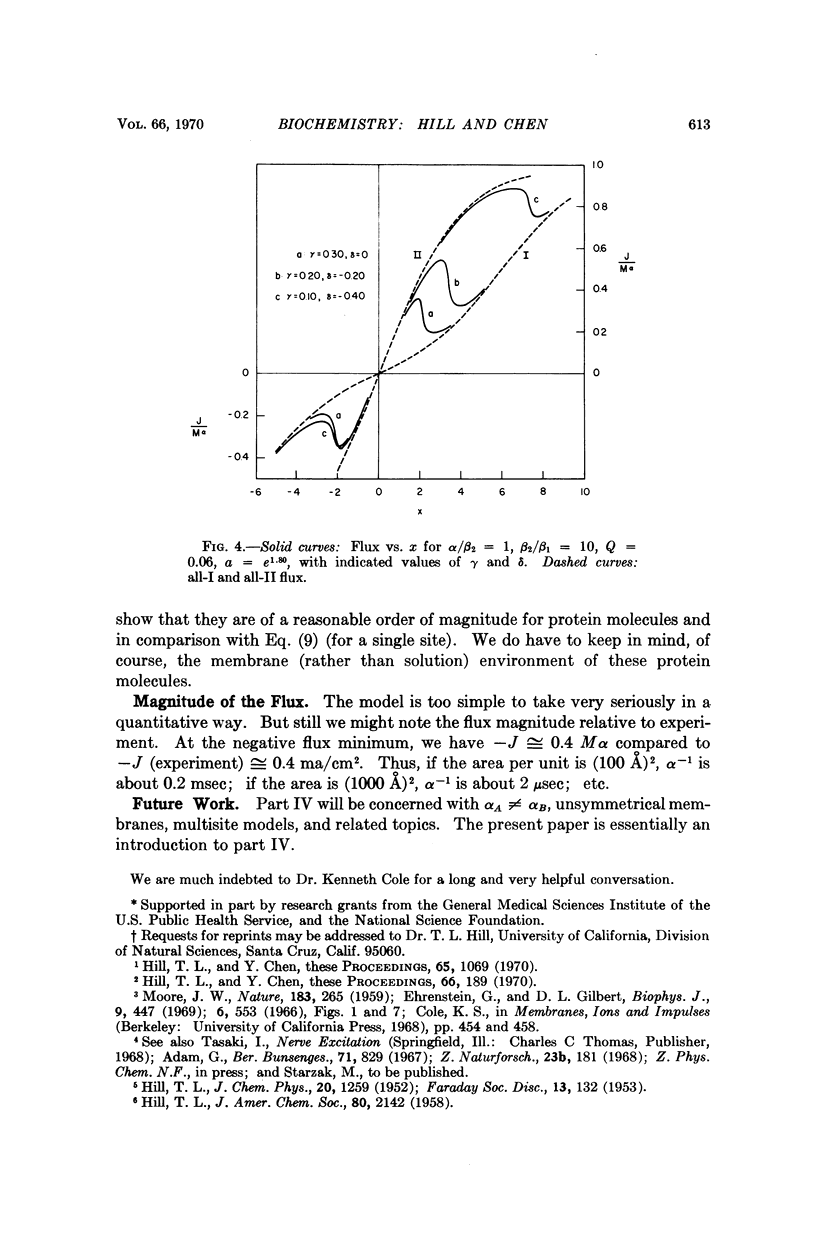
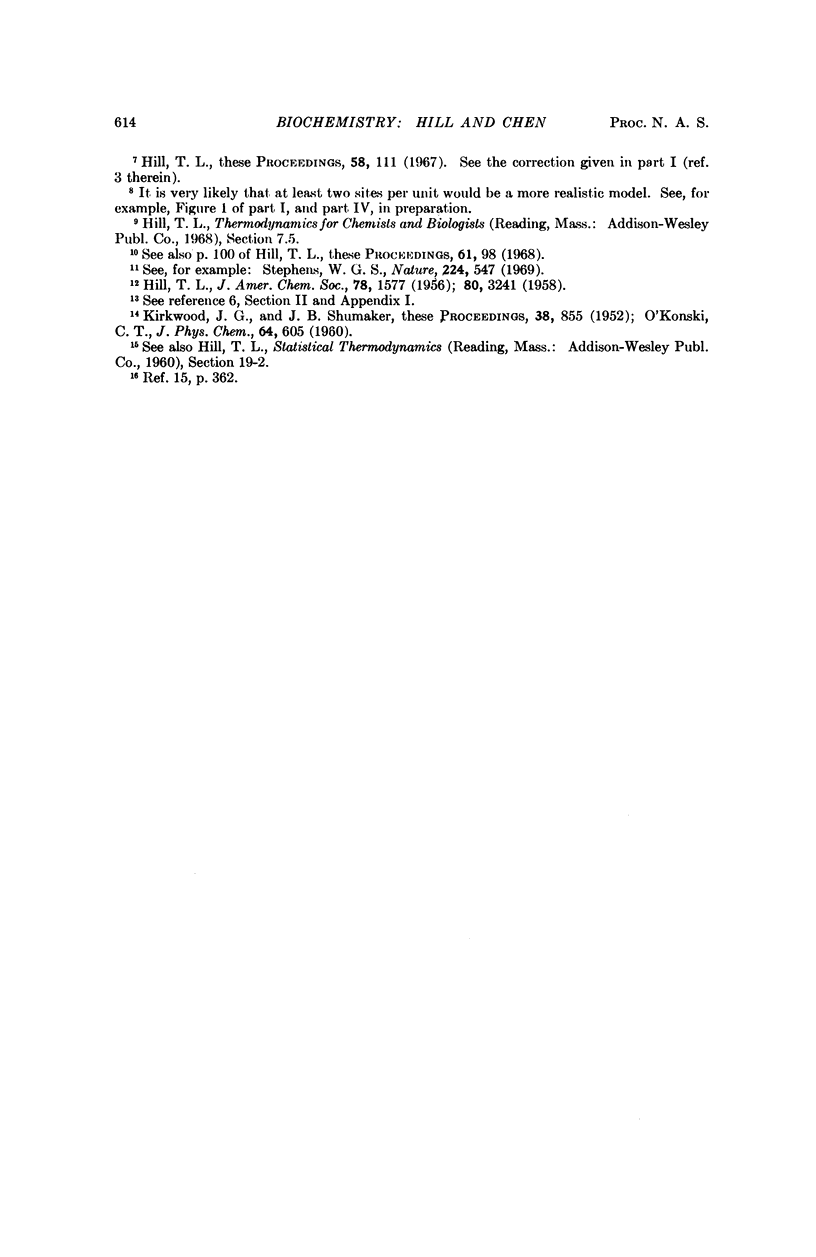
Selected References
These references are in PubMed. This may not be the complete list of references from this article.
- Hill T. L., Chen Y. D. Cooperative effects in models of steady-state transport across membranes. II. Oscillating phase transition. Proc Natl Acad Sci U S A. 1970 May;66(1):189–196. doi: 10.1073/pnas.66.1.189. [DOI] [PMC free article] [PubMed] [Google Scholar]
- Hill T. L. Electric fields and the cooperativity of biological membranes. Proc Natl Acad Sci U S A. 1967 Jul;58(1):111–114. doi: 10.1073/pnas.58.1.111. [DOI] [PMC free article] [PubMed] [Google Scholar]
- Kirkwood J. G., Shumaker J. B. The Influence of Dipole Moment Fluctuations on the Dielectric Increment of Proteins in Solution. Proc Natl Acad Sci U S A. 1952 Oct;38(10):855–862. doi: 10.1073/pnas.38.10.855. [DOI] [PMC free article] [PubMed] [Google Scholar]
- MOORE J. W. Excitation of the squid axon membrane in isosmotic potassium chloride. Nature. 1959 Jan 24;183(4656):265–266. doi: 10.1038/183265b0. [DOI] [PubMed] [Google Scholar]


